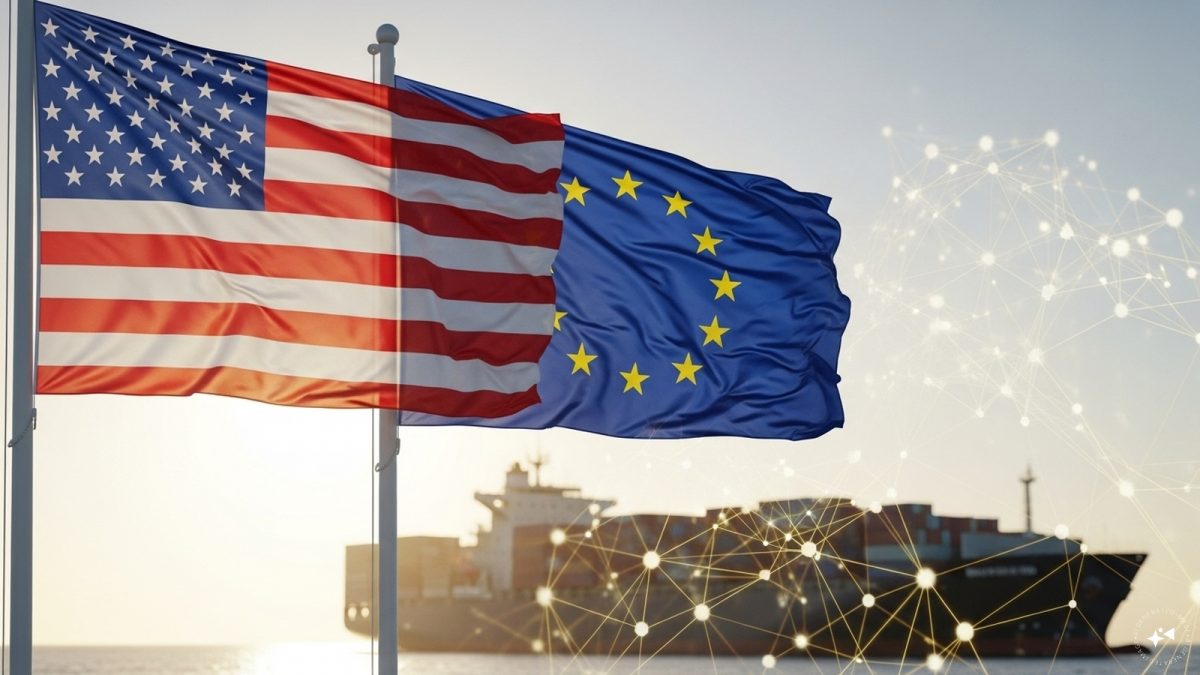The sweeping trade agreement unveiled Sunday between the United States and European Union, forged under intense pressure from President Donald Trump, has sent shockwaves through European capitals, with many questionings whether the deal leaves the EU at a stark disadvantage. Here are seven crucial facts illustrating the challenges and concessions embedded in the pact:
US imposes across-the-board 15% tariff on EU exports
The agreement sets a 15% baseline tariff on nearly all EU goods entering the US, a sharp escalation from the previous average US tariff of about 1.6% on a trade-weighted basis for EU products. Core EU exports, including cars, machinery and manufactured goods are now hit by the full 15% rate. While this prevented Trump’s threatened 30% or even 50% duties, it remains a dramatic rise and the highest generalised tariff level imposed on the EU in decades.
Major EU concessions on US energy
A central element of the deal is the EU’s agreement to purchase approximately $750 billion in US energy over the coming years, with a particular focus on liquefied natural gas (LNG) to replace Russian supplies. This marks one of the largest single-sector purchase commitments ever included in a transatlantic trade deal and reflects significant US leverage on Europe’s energy security.
$600 billion in new EU investments in the US
Brussels has agreed to direct around $600 billion in additional investments to the United States in forthcoming years, covering green energy, manufacturing, and military equipment. For context, this matches the scale of the recently announced EU investment pledges for China, underlining the magnitude of this concession.
Deal struck during Trump’s private tour
The agreement was finalised on Trump’s private golf estate in Scotland outside EU soil while the UK, no longer a member of the EU, secured a different trade arrangement with the US seen as more favourable. The optics highlight a European desperation to avert more punitive tariffs especially as London was exempted from the harshest terms on steel and aluminium.
EU pulls back on retaliation, misses broader show of strength
In opting for a settlement, Brussels scrapped or dialled back threatened counter-tariffs, unlike China and Canada both of which have previously matched Trump’s measures step for step. Some analysts and European commentators argue the EU missed a chance to assert broader strength instead settling under pressure to avoid economic escalation.
Trump’s core agenda intact: Steel and aluminium tariffs remain unchanged
Despite EU negotiating efforts, the deal leaves in place Trump’s 50% tariffs on European steel and aluminium, with only vague promises of a future quota-based relaxation. These metals remain an especially sore point among EU industry lobbyists and the longevity of these trade barriers highlights the limited EU leverage in core strategic sectors.
Narrow exemptions: Some sectors spared but automobiles face full impact
Certain sectors notably aircraft parts, select chemicals and some agri-products won zero-tariff exemption status. However, automobiles, representing a major chunk of EU exports to the US, fall under the full 15% tariff, a significant new cost for German, French and Italian carmakers already grappling with global market headwinds.
While European leaders hailed the agreement as “providing certainty” and averting a full-scale trade war, many in Europe see it as a lopsided settlement extracted at a moment of vulnerability. The tariff levels, energy purchase commitments and investment pledges all signify a substantial shift in the transatlantic economic balance, one that, at least for now, appears to favour the US and President Trump’s tough bargaining tactics.
)